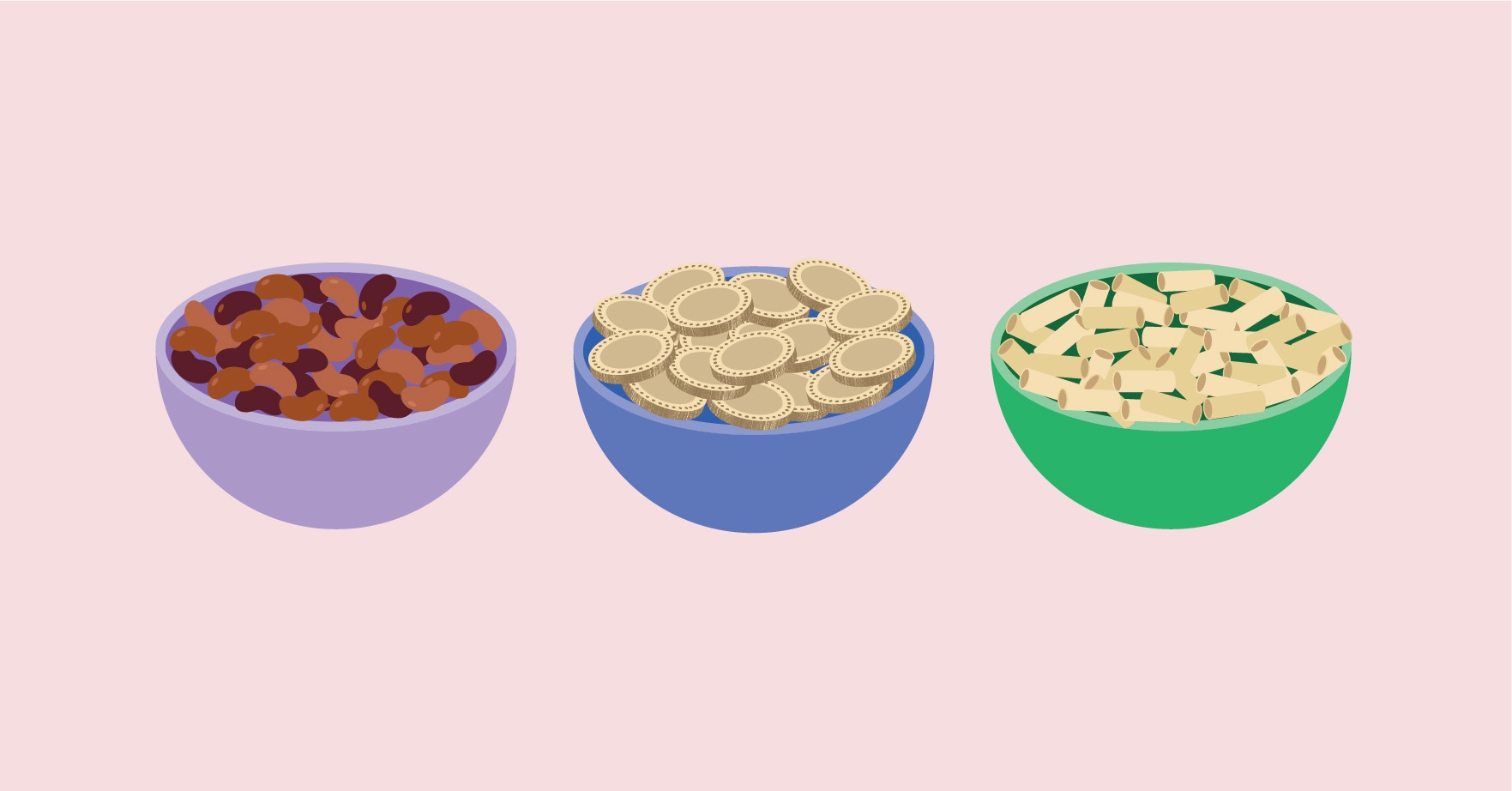Cost-effective ways to support teachers in a challenging economy
Are you looking for cost-effective ways to support learners in your classroom? This post gives you a realistic take on using maths manipulatives as well as DIY ideas to help turn abstract mathematical concepts into reality.
In an ideal world, teachers would use a variety of manipulatives accessible to all children throughout their maths learning. We’ve read the research, had the teacher training and know that CPA (Concrete-Pictorial-Abstract) representations can help children understand mathematical concepts.
Research aside though, as teachers we know the reality — the jumbled box of numicon shared between a year group, the clocks with hands that fell off long ago, the full tub of counters you had at the start of the year that is now mysteriously empty!
What do we mean by maths manipulatives?
It can sound complicated but manipulatives are simply physical and visual aids that can be used to support the teaching and learning of mathematical concepts. Through play, exploration and modelling, most children find that manipulatives help them to get to grips with the very abstract notions of numbers.
Over the past two decades, research has indicated the positive impact of using manipulatives in the classroom. A 2013 report published in the Journal of Educational Psychology identified “statistically significant results” when teachers used manipulatives compared with when they only used abstract maths symbols.
The NCETM agrees that physical manipulatives should play a central role in maths teaching. “Manipulatives are not just for young pupils, and also not just for those who can’t understand something. They can always be of help to build or deepen understanding of a mathematical concept,” the organisation said in a post entitled Developing your use of manipulatives in maths teaching.
So what can be done to ensure children have access to manipulatives at a time when schools may not be able to afford teaching assistants or even to keep the heating on?
DIY ideas to help teachers inside the classroom
Base 10 blocks or Dienes blocks
Base 10 or Dienes blocks are used to support understanding of number. They are useful when learning about addition, subtraction, place value and regrouping, or whenever you need visuals to represent ones, tens, hundreds and thousands.
DIY Version
Why not use the following instead?
Straws or lolly pop sticks
Easily available and relatively sturdy, straws can be used instead of base 10 blocks. Simply use single straws to represent ones, a bundle of ten straws secured with an elastic band to represent tens, and ten bundles to represent one hundred. If this sounds time-consuming to prepare — why not make it into a learning opportunity for the children, they can create their bundles and help you at the same time!
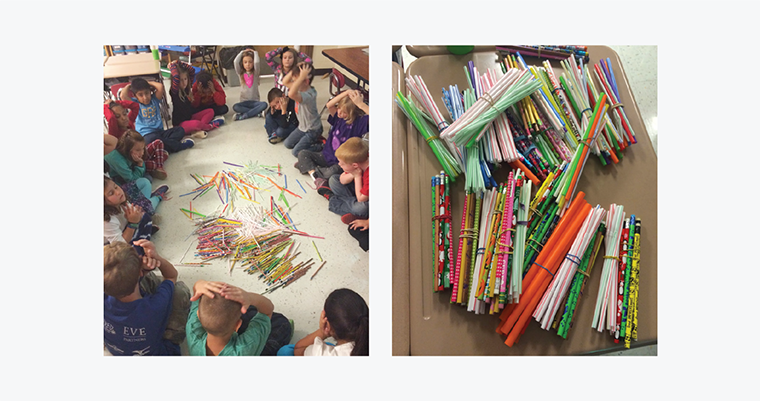
Images from Lauren Piper
Coins
Most schools will have a supply of pretend coins to help teach a money unit. These can double up as a great place-value teaching tool. Use one pence coins to represent ones, ten pence coins to represent tens and one pound coins to represent hundreds! Using these coins outside of discrete ‘money’ lessons will also reinforce coin values and revisit prior learning — double win!
Multilink cubes and counters
Used as a physical aid to support counting, multilink cubes are particularly useful in addition and subtraction under 20, counting through tens boundaries and comparing numbers.
DIY Version
Why not use the following instead?
Beans, pasta or cereal
Beans, pasta and cereal provide a super cheap and easily accessible option that lasts. There are lots of interesting shapes to choose from. Why not try dried kidney beans to add a bit of colour? Do remember to remind your children not to eat them though!
Pompoms, colourful beads, feathers, pipe cleaners and colouring crayons
If you’re looking for colourful options, raid the art supply cupboard and use these tactile options to support counting.
Bead strings
Why not create DIY bead strings with your class at the start of the year? Simply give each child (or pair of children if it's a paired activity) a metre of string and 100 beads to thread onto the length of the string. Finally, tie a double knot on each end and voila!
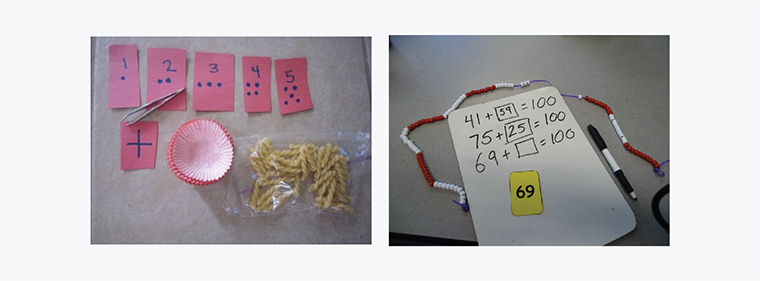
Image from: I can teach my child
Image from: The elementary mathematic
Transform Your Maths Assessment
Insights — our online assessment tool — gives you instant, powerful data to identify gaps and improve results.

Fraction tiles and towers
These proportionally sized tiles or blocks can be used to compare, order, add and subtract fractions as well as work out equivalent fractions.
DIY Version
Why not use the following instead?
Paper plates
Another great maths activity for upper KS2 children to physically make for younger years, or for you to make for your class. Using 12 coloured paper plates, divide each plate into equal parts. Store for children to piece together to support them when comparing and finding equivalent fractions.
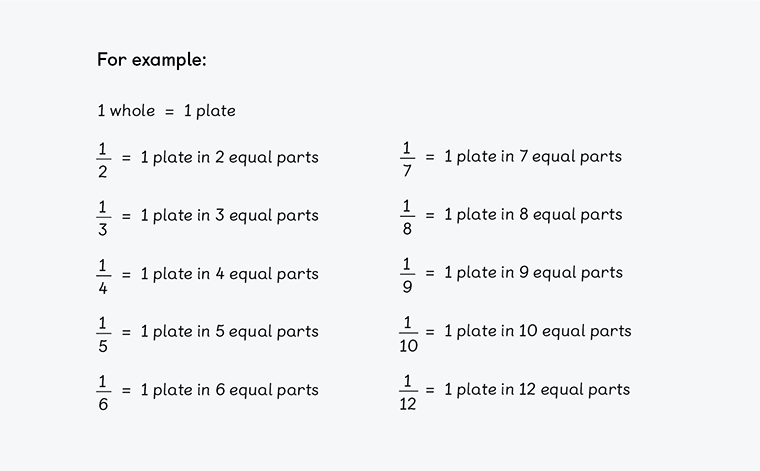

Image from: Home school on a budget
Image from: We are teachers
Pool floaties
A fun, tactile and colourful way to compare fractions. Simply cut pool floaties to 30 cm lengths and divide them into the fractions you want.

Seasonal maths manipulative ideas
Using the great outdoors to stock up your DIY manipulatives is a cost-effective and seasonal way to keep children engaged with classroom resources. You could set up a nature table which features different items that children can use across the curriculum — including maths manipulatives.
Beach
- Stones and pebbles
- Sticks
- Shells
Woodland and garden
- Plant pots
- Seeds and pods
- Leaves
- Conkers and acorns
- Pinecones
Festive season
- Baubles
- Candy canes
- Cotton wool balls
- Pompoms
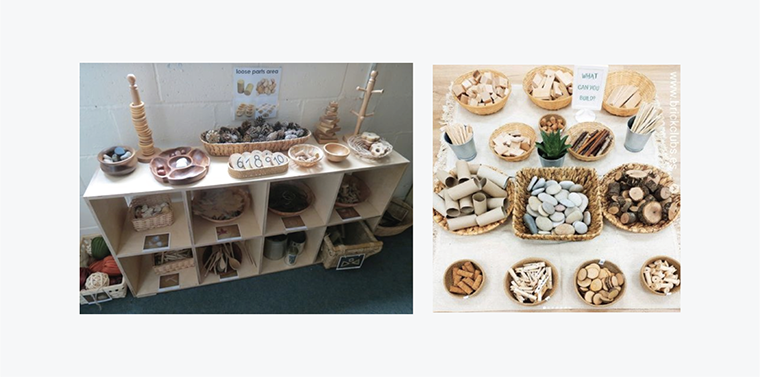
The key thing to take away is that manipulatives don’t have to be costly, colour-coded or stored neatly away in boxes. You don’t need to be that Pinterest teacher. Manipulatives can be any object that helps children learn about numbers and the number system. You know your class and what works for them. Giving children autonomy and some freedom over their learning and the routes that they take to get to an answer doesn’t have to be complicated or costly.
References
A meta-analysis of the efficacy of teaching mathematics with concrete manipulatives, Carbonneau, K.J., Marley, S.C. & Selig, J.P., 2013
